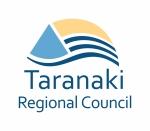Flare investigation clears the air
The flaring of hydraulic fracturing (“fracking”) fluids has minimal effects on air quality even very close to wellsites, a Taranaki Regional Council investigation has found.
While hydrocarbon exploration operators normally recover such fluids for off-site disposal, flaring is sometimes required for the safety of workers or to protect equipment.
The investigation took place in February and the results were reported to the Council’s Consents and Regulatory Committee today (5 June).
The Council’s Director-Environment Quality, Gary Bedford, says the latest report brings robust and scientific data to the public discussion about hydraulic fracturing. Concerns have been expressed overseas about its potential effects on air quality, and these are now being echoed in New Zealand.
A similar study was carried out at hydrocarbon sites in 1998, and field measurements were augmented with computer modelling. But given the current preoccupation with fracturing fluids, the Council wanted to ensure it captured any possible implications of the use of fracking additives.
In the latest investigation, emission and ambient air samples were collected at and downwind of a flare that included the biocides, gelling and gel-breaking agents, inert proppants such as sand or microscopic ceramic beads, and ‘wetting’ agents used in hydraulic fracking.
The samples were tested for tiny particles known as particulate matter (PM); dioxins and furans; polyaromatic hydrocarbons; aldehydes (including formaldehyde), volatile organic compounds (including benzene, toluene, xylene and ethyl benzene); methanol; and the more conventional products of combustion – oxygen, carbon dioxide, carbon monoxide, nitrogen oxides, and sulphur dioxide.
Results included:
- PM levels at or below those generally found in the region.
- No trace of dioxins or furans.
- Polyaromatic hydrocarbon levels lower than those found in central city areas.
- Volatile organic compound (including benzene), aldehyde and methanol levels well within Ministry for the Environment guidelines.
- No trace of carbon monoxide, and minimal levels of the other conventional products of combustion.
Critically, every downwind measurement satisfied the relevant Ministry for the Environment health-based ambient air quality guideliens.
“It’s important to note that on some measures, the air downwind of the flare was better than that found in most New Zealand cities,” says Mr Bedford.
“In simple terms, mowing your lawns with a two-stroke mower would have more effect on the quality of the air you breathe than standing downwind of a flare.
“While we have previously investigated emissions from flaring, this is the first time we have looked specifically at the compounds associated with fracking. The results are reassuring for the public and for site operators, and for the Council. They will be very useful for us as we set standards for activity by the industry.”
He says that while exploration and production companies endorsed and co-operated with the project, its design and implementation were completely independent of any influence or direction from the companies. The design of the investigation and reporting of results were also subject to independent peer review.
The full report on the investigation can be found online at www.trc.govt.nz/hydraulic-fracturing/.
